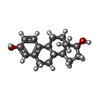Entry Database : PDB / ID : 2ocfTitle Human estrogen receptor alpha ligand-binding domain in complex with estradiol and the E2#23 FN3 monobody Estrogen receptor Fibronectin Keywords / / / / / Function / homology Function Domain/homology Component
/ / / / / / / / / / / / / / / / / / / / / / / / / / / / / / / / / / / / / / / / / / / / / / / / / / / / / / / / / / / / / / / / / / / / / / / / / / / / / / / / / / / / / / / / / / / / / / / / / / / / / / / / / / / / / / / / / / / / / / / / / / / / / / / / / / / / / / / / / / / / / / / / / / / / / / / / / / / / / / / / / / / Biological species Homo sapiens (human)Method / / / Resolution : 2.95 Å Authors Rajan, S.S. / Kuruvilla, S.M. / Sharma, S.K. / Kim, Y. / Huang, J. / Koide, A. / Koide, S. / Joachimiak, A. / Greene, G.L. Journal : Proc.Natl.Acad.Sci.USA / Year : 2002Title : Probing protein conformational changes in living cells by using designer binding proteins: application to the estrogen receptor.Authors : Koide, A. / Abbatiello, S. / Rothgery, L. / Koide, S. History Deposition Dec 20, 2006 Deposition site / Processing site Revision 1.0 Nov 6, 2007 Provider / Type Revision 1.1 Jul 13, 2011 Group / Version format complianceRevision 1.2 Aug 3, 2011 Group Revision 1.3 Oct 11, 2017 Group / Category Item / _reflns_shell.percent_possible_allRevision 1.4 Oct 20, 2021 Group / Derived calculationsCategory database_2 / struct_conn ... database_2 / struct_conn / struct_ref_seq_dif / struct_site Item _database_2.pdbx_DOI / _database_2.pdbx_database_accession ... _database_2.pdbx_DOI / _database_2.pdbx_database_accession / _struct_conn.pdbx_leaving_atom_flag / _struct_ref_seq_dif.details / _struct_site.pdbx_auth_asym_id / _struct_site.pdbx_auth_comp_id / _struct_site.pdbx_auth_seq_id Revision 1.5 Aug 30, 2023 Group / Refinement descriptionCategory / chem_comp_bond / pdbx_initial_refinement_modelRevision 1.6 Nov 6, 2024 Group / Category / pdbx_modification_feature
Show all Show less Remark 999 SEQUENCE AUTHORS STATE THAT THE C-TERMINAL RESIDUES 549-595 FROM CHAIN A AND N-TERMINAL CLONING ... SEQUENCE AUTHORS STATE THAT THE C-TERMINAL RESIDUES 549-595 FROM CHAIN A AND N-TERMINAL CLONING ARTIFACT FROM CHAIN D ARE MISSING IN COORDINATES DUE TO LACK OF ELECTRON DENSITY.
 Yorodumi
Yorodumi Open data
Open data Basic information
Basic information Components
Components Keywords
Keywords Function and homology information
Function and homology information Homo sapiens (human)
Homo sapiens (human) X-RAY DIFFRACTION /
X-RAY DIFFRACTION /  SYNCHROTRON /
SYNCHROTRON /  MOLECULAR REPLACEMENT / Resolution: 2.95 Å
MOLECULAR REPLACEMENT / Resolution: 2.95 Å  Authors
Authors Citation
Citation Journal: Proc.Natl.Acad.Sci.USA / Year: 2002
Journal: Proc.Natl.Acad.Sci.USA / Year: 2002 Structure visualization
Structure visualization Molmil
Molmil Jmol/JSmol
Jmol/JSmol Downloads & links
Downloads & links Download
Download 2ocf.cif.gz
2ocf.cif.gz PDBx/mmCIF format
PDBx/mmCIF format pdb2ocf.ent.gz
pdb2ocf.ent.gz PDB format
PDB format 2ocf.json.gz
2ocf.json.gz PDBx/mmJSON format
PDBx/mmJSON format Other downloads
Other downloads 2ocf_validation.pdf.gz
2ocf_validation.pdf.gz wwPDB validaton report
wwPDB validaton report 2ocf_full_validation.pdf.gz
2ocf_full_validation.pdf.gz 2ocf_validation.xml.gz
2ocf_validation.xml.gz 2ocf_validation.cif.gz
2ocf_validation.cif.gz https://data.pdbj.org/pub/pdb/validation_reports/oc/2ocf
https://data.pdbj.org/pub/pdb/validation_reports/oc/2ocf ftp://data.pdbj.org/pub/pdb/validation_reports/oc/2ocf
ftp://data.pdbj.org/pub/pdb/validation_reports/oc/2ocf Links
Links Assembly
Assembly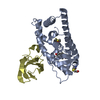

 Components
Components Homo sapiens (human) / Gene: ESR1, ESR, NR3A1 / Plasmid: pMCSG7 / Species (production host): Escherichia coli / Production host:
Homo sapiens (human) / Gene: ESR1, ESR, NR3A1 / Plasmid: pMCSG7 / Species (production host): Escherichia coli / Production host: 
 Homo sapiens (human) / Gene: CIG, FN1, FN / Production host:
Homo sapiens (human) / Gene: CIG, FN1, FN / Production host: 
 X-RAY DIFFRACTION / Number of used crystals: 1
X-RAY DIFFRACTION / Number of used crystals: 1  Sample preparation
Sample preparation SYNCHROTRON / Site:
SYNCHROTRON / Site:  APS
APS  / Beamline: 14-BM-C / Wavelength: 0.979 Å
/ Beamline: 14-BM-C / Wavelength: 0.979 Å Processing
Processing MOLECULAR REPLACEMENT
MOLECULAR REPLACEMENT Movie
Movie Controller
Controller


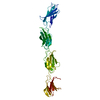







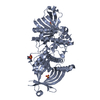
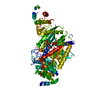
 PDBj
PDBj


















